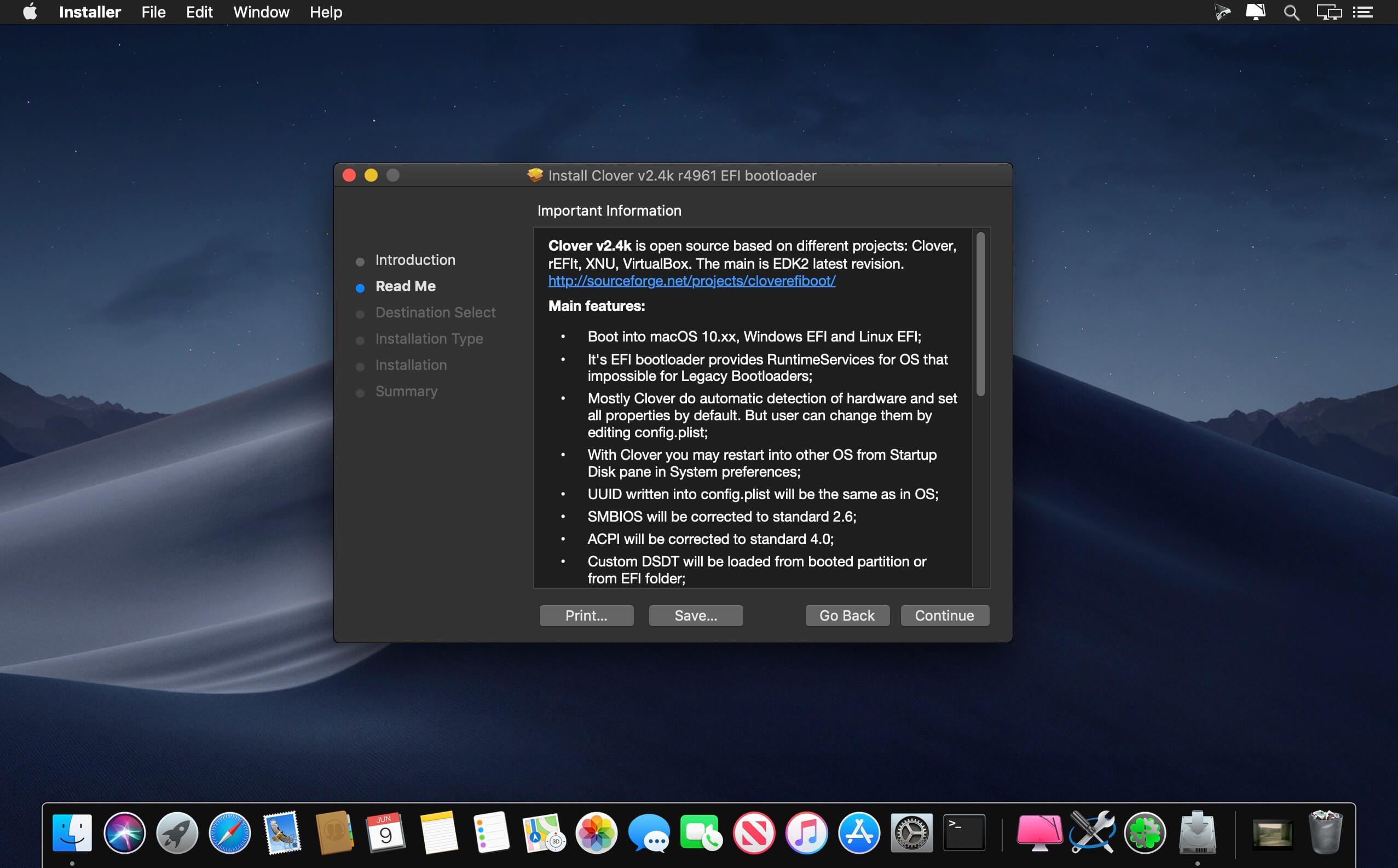

- #CLOVER EFI AUTO INSTALLER WINDOWS 10 MAC OS#
- #CLOVER EFI AUTO INSTALLER WINDOWS 10 INSTALL#
- #CLOVER EFI AUTO INSTALLER WINDOWS 10 PRO#
- #CLOVER EFI AUTO INSTALLER WINDOWS 10 SOFTWARE#
I used the “Mojave Patcher Tool” to download a copy of Mojave installer since I have a Macbook Pro 2011 which is not natively supported and I can’t download it natively. I’ve follow this guide and went pretty far, I’ve done the USB bootable installer. Hi guys! Im pretty new to the Hackintosh world, I have a build with these specs You will now be able to boot macOS without the USB Flash Drive
#CLOVER EFI AUTO INSTALLER WINDOWS 10 MAC OS#
#CLOVER EFI AUTO INSTALLER WINDOWS 10 INSTALL#

#CLOVER EFI AUTO INSTALLER WINDOWS 10 SOFTWARE#
Click Agree for the Software Terms Licenese Agreement.Select Install macOS from the main menu.Close Disk Utility if it did not automatically close.Now that macOS is formatted as a GUID partition map and there is an empty partition for macOS to be installed on let us begin it.

Name: (It can be named anything you want).If you get the Apple File System Space Sharing popup select the Always partition checkbox and click Partition.Select the disk you will be installing macOS and either select Partition to add space for macOS or Erase if you want to start clean.Select Show All Devices from the drop down menu by pressing the View button at the top left top left corner.Select Disk Utility from the install menu.Press Continue when the installer appears.When the installer loads we will want to properly format the disk as GUID for hackintosh usability before beginning the install. Step 2 – Partition the Drive for macOS Mojave Installer will now slowly load… At first you will seen the Apple loading bar below, then you will see a blank grey screen briefly, then the Apple loading bar once again and then back to the grey screen again where the installer will finally appear.Use the arrow keys to verify Boot macOS Install from Install macOS Mojave is selected When the temporary selection screen appears Select UEFI : (USB Device Name). Usually the button that needs to be spammed is F8, F10, F11, or F12. If the USB drive isn’t set as the default boot volume in BIOS you can change the temporary boot device when the boot screen appears.


 0 kommentar(er)
0 kommentar(er)
